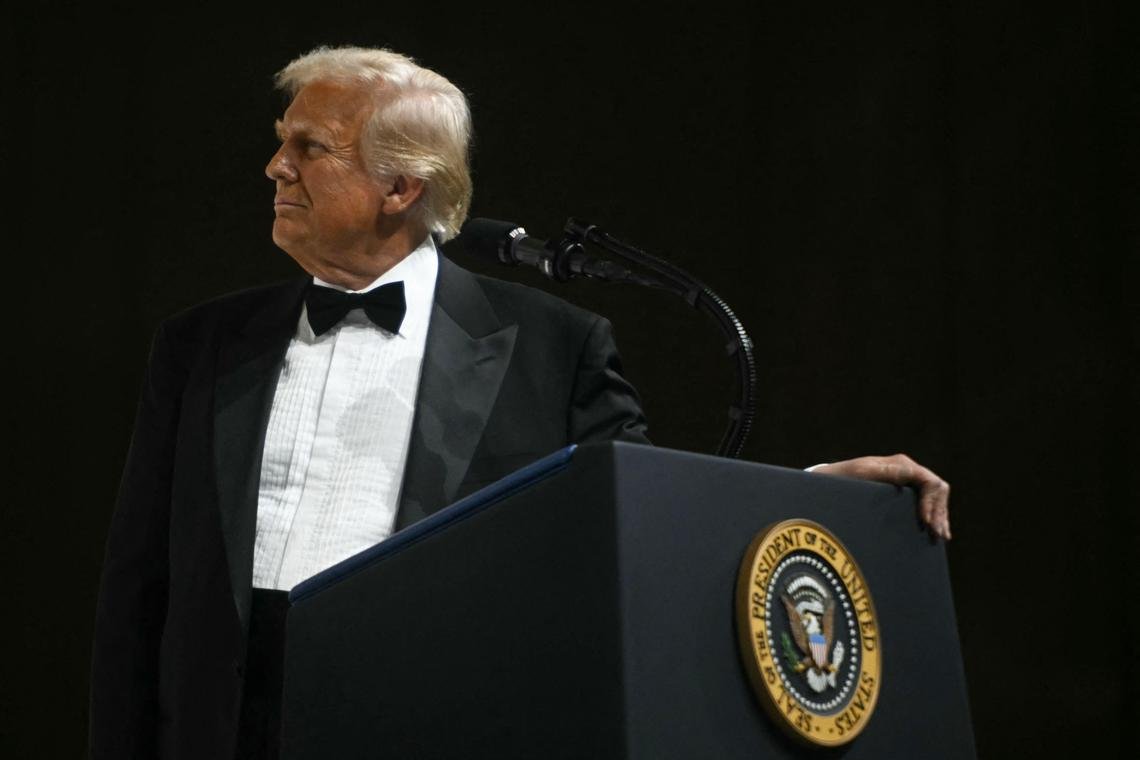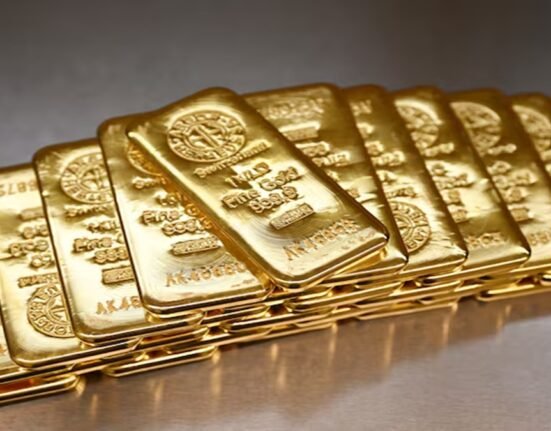SINGAPORE – Global markets reacted differently to the initial actions taken by US President Donald Trump following his inauguration on Jan 20.
Gold edged higher after Mr Trump announced he would likely impose tariffs on Mexico and Canada early in February, even as he held off from immediately hitting China with import levies.
Bullion added to a modest gain on Jan 21 to trade near US$2,720 an ounce, as traders weighed the potential implications of US tariffs of as much as 25 per cent against its neighbours. If enacted, the move threatens to spark a trade war among the nations.
Mr Trump also indicated he was still considering a universal tariff on all foreign imports to the US but said he was “not ready for that yet”.
The US dollar strengthened against all its Group of 10 peers except the yen after Mr Trump said he was planning to enact tariffs on Mexico and Canada.
But the Australian and New Zealand dollars were standing near two-week highs on Jan 21 after Mr Trump also stopped short of imposing new tariffs on China in his first day in office, triggering a broad correction in the greenback.
The yuan strengthened, while the Singapore dollar remained largely flat against the greenback.
Trump refrained from unveiling any China-specific tariffs on his first day in office, instead ordering his administration to address unfair trade practices globally and investigate whether Beijing had complied with a deal signed during his first term.
Shares in mainland China edged lower, even after Mr Trump held off unveiling any new China-specific tariffs. China’s blue-chip CSI300 Index rallied about 0.8 per cent at the open but was soon trading flat.
“The tariff respite was short-lived, as expected, with the latest headline signalling that tariffs have been delayed but not averted,” Ms Charu Chanana, chief investment strategist at Saxo Markets, told Bloomberg.
“However, it seems like Canada and Mexico are in the focus but negotiation hopes are kept alive for China, suggesting China markets may still be supported.”
Mr Yuan Yuwei, founder and chief investment officer of Water Wisdom Asset Management, called Mr Trump’s return “marginally positive”.
“Previously, Mr Trump was seen as dreadful. So once you see policies are less severe than thought, it’s good news to China assets.”
Mr Yuan also expects Mr Trump to be less stringent in his crackdown against China than his predecessor Joe Biden, who “sought to strangle China to death”.
The CSI300 Index has dropped roughly 5 per cent since Mr Trump won the election on Nov 5 with a threat to impose steep tariffs on Chinese goods, but had already rebounded over the past week amid gestures of goodwill between Beijing and Washington.
Hong Kong’s Hang Seng Index rose when Asia markets opened, helping to lift MSCI’s broadest index of Asia-Pacific shares outside Japan.
Singapore shares began trading in negative territory, with the Straits Times Index down 0.3 per cent at 3,796.55.
US markets were closed for a holiday on Jan 20.
Treasuries advanced. The yield on the benchmark US 10-year Treasury note fell 7.1 basis points to 4.54 per cent, while the shorter duration two-year Treasury yield, which typically moves in step with interest rate expectations, fell 4.4 basis points to 4.228 per cent.
When treasury prices rise, their yields fall because the fixed interest payments become less attractive relative to the higher purchase price.
Analysts cautioned that even a measured approach to tariffs could still stoke inflation worries and keep US rates higher for longer.
“If you look at what Trump said in his speech, it looks like he’s quite firm on tariffs,” said Mr Zachary Griffiths, senior investment grade strategist at CreditSights, told Reuters.
“If you have a more gradual, but still large tariffs in terms of percentage on a broad swath of countries… that could be more challenging from an inflation perspective for the Fed and could even result in policy being tighter for longer.”
The Federal Reserve in December jolted the market by projecting just two rate cuts in 2025, down from four predicted previously, due to worries over inflation and the Trump administration’s election pledges.
In cryptocurrency, Mr Trump’s new token gave up some of its strong gains after having soared to more than US$10 billion in market value at the start of the week.
Mr Trump on Jan 20 launched a new cryptocurrency token named $Trump, which surged to reach a peak of US$74.59 before stabilising around US$35 on Jan 21.
Bitcoin eased away from a record high of more than US$109,000 per coin hit on Jan 20. BLOOMBERG, REUTERS
Join ST’s Telegram channel and get the latest breaking news delivered to you.







